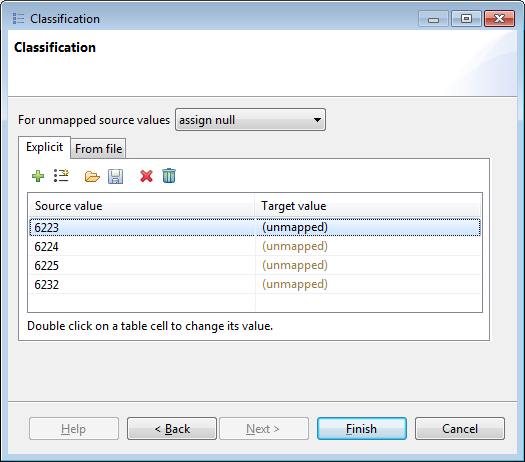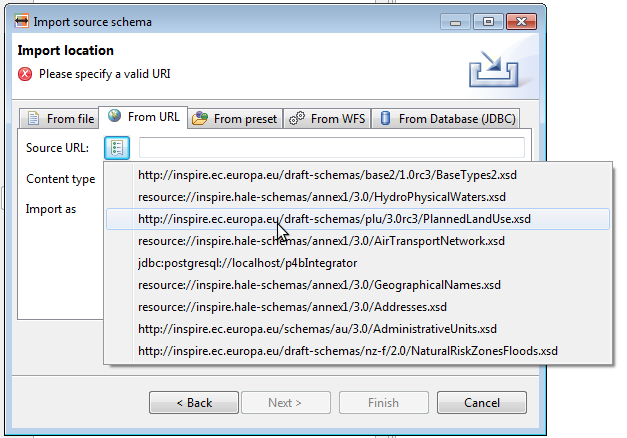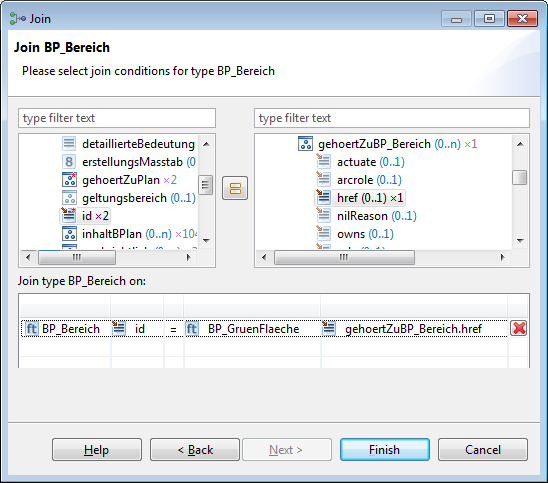
For more information, see the Database Import documentation.

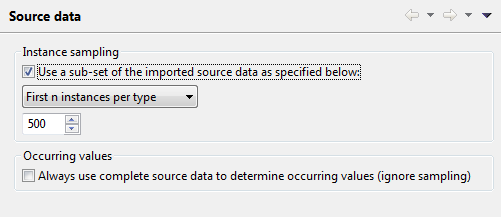
For more information, see Working with a source data set.
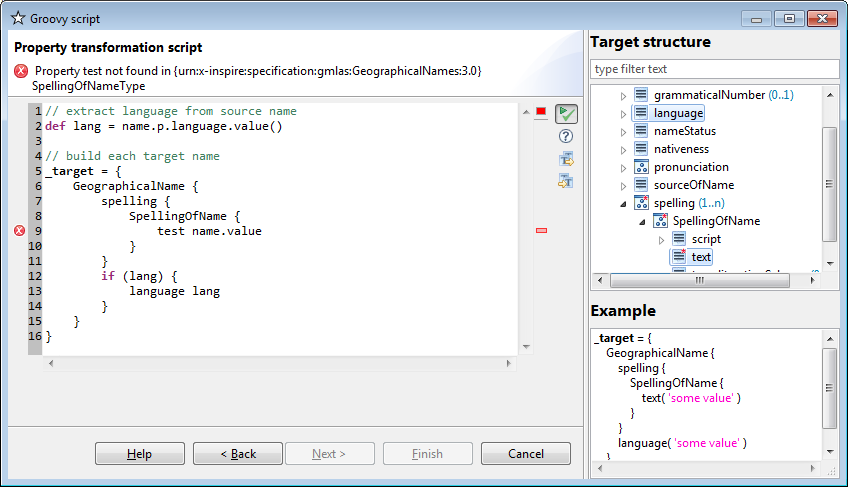
If you are looking at this page from your local copy of HALE you can directly load these example projects to get an idea on how to work with Groovy scripts in the transformation:
 Groovy property transformation example using the Groovy script function
Groovy property transformation example using the Groovy script function
 Groovy type transformation example using the Groovy Retype function
Groovy type transformation example using the Groovy Retype function
- Fill the lookup table with values encountered in the source data (Occurring values) or enumeration values defined in the schema
- Load the lookup table from a CSV or Excel file
- Save the lookup table as a CSV or Excel file
